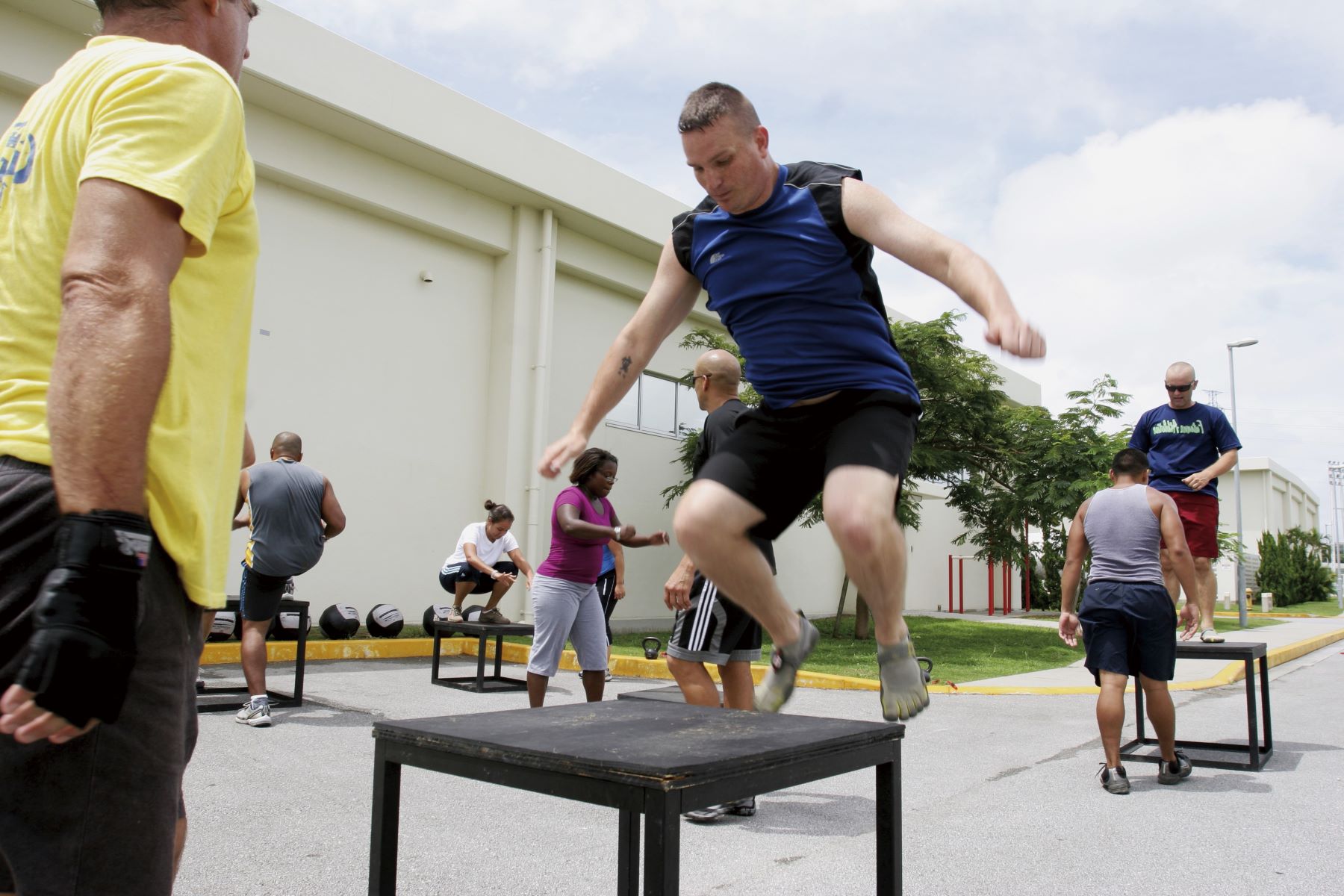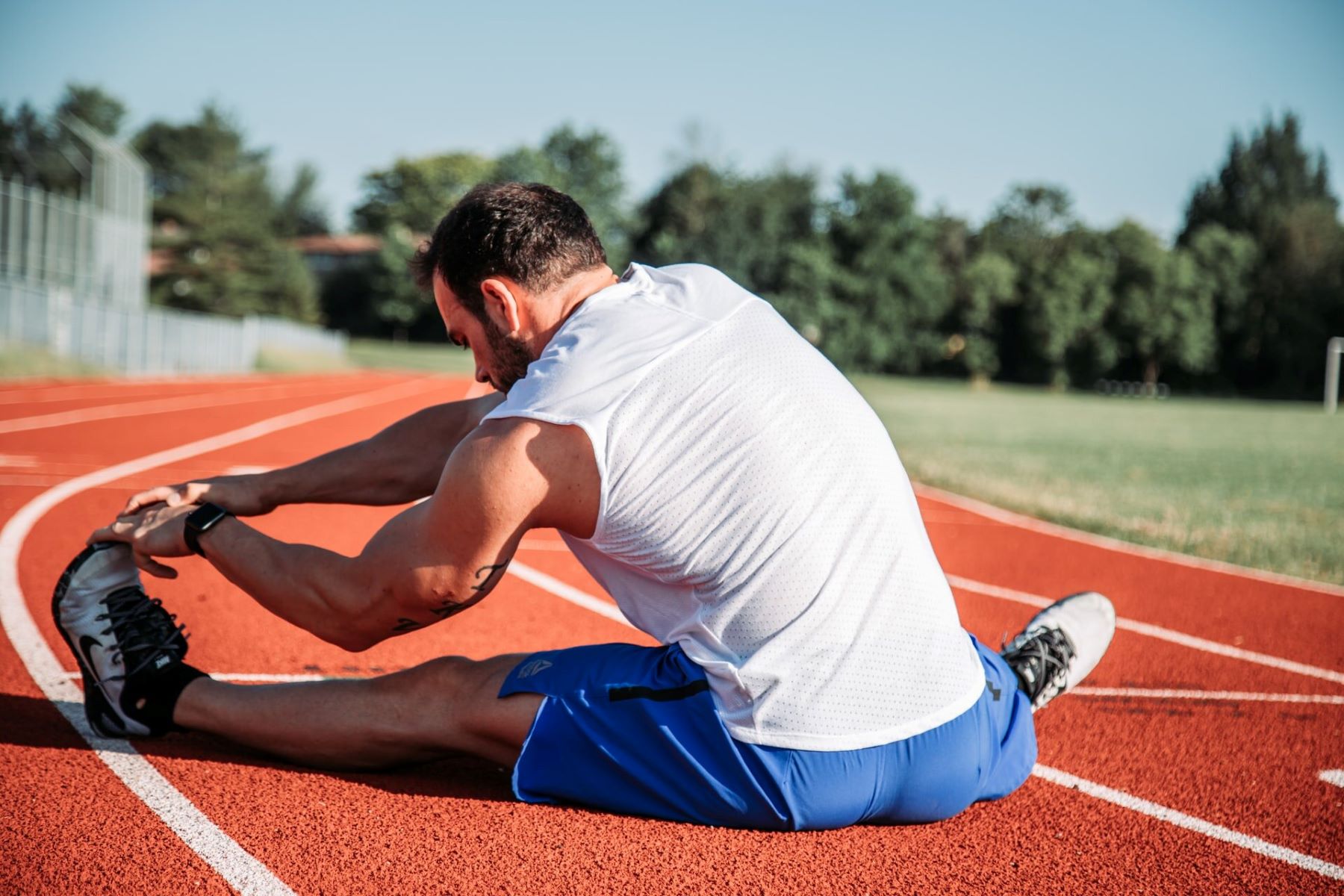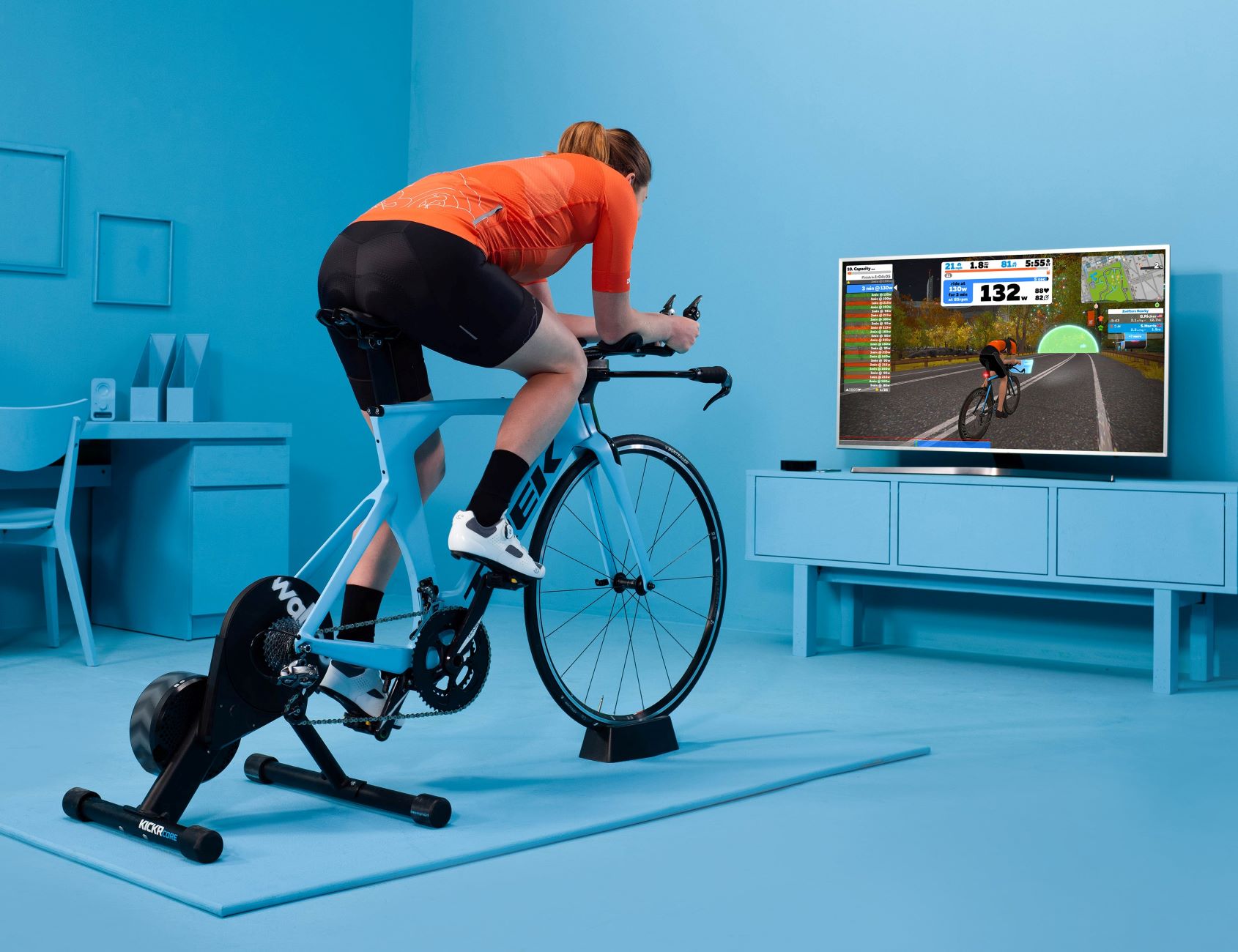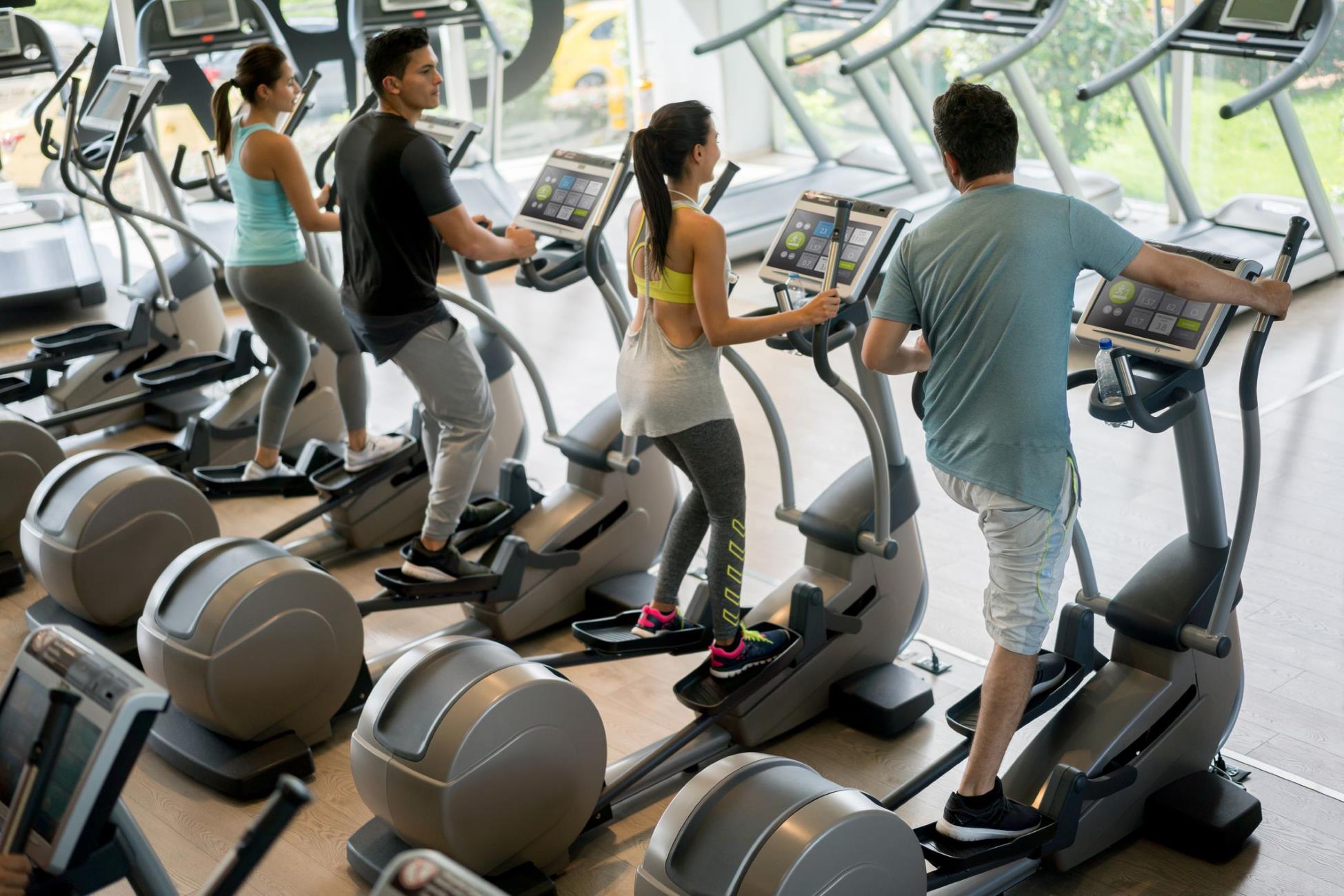Home>Training & Techniques>Getting Started With Plyometrics: Exploring The Benefits For Runners


Training & Techniques
Getting Started With Plyometrics: Exploring The Benefits For Runners
Published: March 6, 2024
Discover the benefits of plyometric training and techniques for runners. Learn how to incorporate plyometrics into your training regimen to improve speed, power, and performance.
(Many of the links in this article redirect to a specific reviewed product. Your purchase of these products through affiliate links helps to generate commission for Therunningadvisor.com, at no extra cost. Learn more)
Table of Contents
Understanding Plyometrics
Plyometrics, often referred to as "jump training," is a form of exercise that focuses on explosive movements to enhance muscle power, agility, and overall athletic performance. This training method involves rapid stretching and contracting of muscles, aiming to improve the efficiency of the neuromuscular system. By incorporating quick, powerful movements, plyometrics can significantly benefit runners by increasing their speed, strength, and endurance.
Plyometric exercises typically involve movements such as jumping, bounding, and hopping, which engage the stretch-shortening cycle of muscles. This cycle involves a rapid eccentric (lengthening) contraction followed by a quick concentric (shortening) contraction, enabling the muscles to generate maximal force in minimal time. As a result, plyometrics can enhance the body's ability to produce explosive movements, making it a valuable training tool for runners seeking to improve their performance.
The primary goal of plyometric training is to improve the stretch-shortening cycle, which plays a crucial role in running mechanics. By enhancing the body's ability to rapidly store and release energy during each stride, runners can experience improved propulsion and efficiency. Additionally, plyometrics can contribute to better coordination and neuromuscular control, leading to more fluid and powerful running movements.
Understanding the principles of plyometrics is essential for runners looking to incorporate this training method into their regimen. By harnessing the benefits of explosive movements and the stretch-shortening cycle, runners can optimize their training to achieve greater speed, endurance, and overall performance.
In summary, plyometrics is a dynamic training approach that focuses on explosive movements to enhance muscle power, agility, and athletic performance. By leveraging the principles of the stretch-shortening cycle, runners can benefit from improved speed, strength, and neuromuscular efficiency, making plyometrics a valuable addition to their training routine.
The Impact of Plyometrics on Running Performance
Plyometric training has a profound impact on the running performance of athletes, offering a multitude of benefits that can significantly enhance their capabilities on the track or trail. By incorporating plyometric exercises into their training regimen, runners can experience improvements in speed, power, and overall running efficiency.
Enhanced Muscular Power
Plyometric exercises are designed to improve the stretch-shortening cycle of muscles, allowing them to generate maximal force in minimal time. This enhanced muscular power plays a crucial role in running performance, as it enables runners to propel themselves forward with greater force and efficiency. By harnessing the explosive movements inherent in plyometrics, runners can develop stronger and more responsive muscles, leading to improved acceleration and overall speed.
Improved Running Economy
Running economy, which refers to the energy cost of running at a given pace, is a key determinant of endurance performance. Plyometric training can contribute to improved running economy by enhancing neuromuscular coordination and efficiency. Through the rapid stretch-shortening cycle of muscles, plyometrics can help runners optimize their stride mechanics, leading to more economical movement patterns and reduced energy expenditure. As a result, runners can sustain higher speeds for longer durations, ultimately enhancing their overall endurance and performance.
Injury Prevention
In addition to enhancing performance, plyometric training can also play a role in injury prevention for runners. By improving muscular strength, power, and neuromuscular control, plyometrics can help athletes develop greater resilience against common running-related injuries. Stronger and more responsive muscles can provide better support and stability, reducing the risk of overuse injuries and enhancing overall durability. Furthermore, the dynamic nature of plyometric exercises can contribute to improved proprioception and coordination, further reducing the likelihood of injuries during running activities.
Neuromuscular Adaptations
Plyometric training induces neuromuscular adaptations that are particularly beneficial for runners. By engaging in explosive movements that challenge the stretch-shortening cycle, runners can enhance the coordination and synchronization of muscle contractions. This improved neuromuscular control can lead to more efficient force production and transfer during running, ultimately translating to enhanced performance on the track or trail.
In summary, the impact of plyometrics on running performance is multifaceted, encompassing improvements in muscular power, running economy, injury prevention, and neuromuscular adaptations. By integrating plyometric exercises into their training routine, runners can unlock their full potential, experiencing enhanced speed, endurance, and overall performance.
Plyometric Exercises for Runners
Plyometric exercises offer runners a diverse array of training techniques that specifically target the development of explosive power, agility, and neuromuscular coordination. These exercises are designed to enhance the stretch-shortening cycle of muscles, ultimately improving the body's ability to generate maximal force in minimal time. By incorporating plyometrics into their training regimen, runners can experience a range of benefits that directly contribute to their performance on the track or trail.
Jump Squats
Jump squats are a fundamental plyometric exercise that effectively targets the lower body muscles essential for running. To perform jump squats, start in a squat position with feet shoulder-width apart. Lower into a squat, then explosively jump upward, extending the hips, knees, and ankles. Upon landing, immediately transition into the next squat, maintaining a fluid and continuous motion. Jump squats enhance lower body power, explosive strength, and coordination, making them a valuable addition to a runner's training routine.
Box Jumps
Box jumps are an excellent plyometric exercise for developing lower body explosiveness and reactive strength. To execute box jumps, stand in front of a sturdy box or platform. From a semi-squat position, propel yourself upward, landing softly on the box with both feet. Focus on minimizing ground contact time and immediately jump back down to the starting position. Box jumps engage the muscles involved in running propulsion, helping runners improve their vertical power and overall explosiveness.
Single-Leg Bounds
Single-leg bounds are a unilateral plyometric exercise that targets stability, balance, and explosive strength. Begin by standing on one leg and propelling yourself forward with a powerful jump, covering as much distance as possible. Upon landing, immediately transition into the next bound, maintaining a controlled and fluid motion. Single-leg bounds enhance unilateral strength, coordination, and proprioception, all of which are essential for runners to maintain balance and stability during dynamic movements.
Depth Jumps
Depth jumps are an advanced plyometric exercise that focuses on rapid force production and reactive strength. To perform depth jumps, start by standing on a raised platform or box. Step off the platform, then upon landing, quickly and explosively jump upward. Depth jumps challenge the stretch-shortening cycle of muscles, promoting rapid force development and neuromuscular coordination. By incorporating depth jumps into their training, runners can enhance their reactive strength and overall explosiveness.
Lateral Bounds
Lateral bounds are lateral plyometric exercises that target the muscles responsible for lateral movement and agility. Begin by standing on one leg and explosively jumping laterally to the other side, landing softly and immediately transitioning into the next bound. Lateral bounds enhance lateral power, stability, and agility, all of which are essential for runners to navigate uneven terrain and execute sharp turns effectively.
Incorporating these plyometric exercises into a comprehensive training plan can significantly benefit runners by enhancing their explosive power, agility, and neuromuscular coordination. By consistently integrating these exercises into their routine, runners can experience improvements in speed, strength, and overall running performance.
Incorporating Plyometrics into Your Training Plan
Incorporating plyometrics into your training plan can yield substantial benefits for runners, enhancing their speed, power, and overall performance. To effectively integrate plyometric exercises into your regimen, it is essential to consider several key factors that can optimize the impact of this training method on your running capabilities.
Progressive Integration
When introducing plyometrics into your training plan, it is crucial to adopt a progressive approach. Start by incorporating basic plyometric exercises and gradually progress to more advanced movements as your strength and neuromuscular coordination improve. This gradual integration allows your body to adapt to the demands of plyometric training, reducing the risk of overuse injuries and ensuring sustainable progress over time.
Strategic Timing
Strategic timing of plyometric workouts within your training plan is essential for maximizing their benefits. Consider integrating plyometrics on days when your legs are relatively fresh, such as after a lighter running session or on cross-training days. This strategic approach ensures that you can fully engage in plyometric exercises without compromising the quality of your primary running workouts.
Complementary Pairing
Pairing plyometric exercises with strength training sessions can create a synergistic effect, enhancing your overall muscular power and explosiveness. By strategically combining these training modalities, you can target different aspects of muscular development, ultimately contributing to improved running performance. For example, performing lower body strength exercises, such as squats and lunges, alongside plyometrics can effectively enhance your lower body strength and power.
Recovery and Rest
Incorporating adequate recovery and rest periods between plyometric sessions is crucial for allowing your muscles to adapt and grow stronger. Plyometric exercises place significant demands on the neuromuscular system, and providing ample recovery time is essential for preventing overtraining and minimizing the risk of injury. Be mindful of incorporating rest days and active recovery sessions into your training plan to optimize the benefits of plyometrics.
Read more: The Benefits Of Pilates For Runners
Consistency and Progress Tracking
Consistency in incorporating plyometrics into your training plan is key to reaping long-term benefits. Establish a structured schedule for plyometric workouts, ensuring that they are integrated seamlessly with your running and strength training sessions. Additionally, tracking your progress and monitoring improvements in speed, power, and running economy can provide valuable insights into the effectiveness of plyometrics in enhancing your overall performance.
By strategically integrating plyometrics into your training plan and adhering to a progressive and balanced approach, runners can harness the full potential of this training method to elevate their running capabilities. With careful consideration of timing, recovery, and complementary training modalities, incorporating plyometrics can lead to significant improvements in speed, power, and overall running performance.
Precautions and Considerations for Plyometric Training
When incorporating plyometric training into a running regimen, it is crucial to prioritize safety and consider specific precautions to minimize the risk of injury and optimize the effectiveness of the training. Plyometric exercises place significant demands on the musculoskeletal and neuromuscular systems, requiring careful attention to form, progression, and recovery. By acknowledging key considerations and implementing appropriate precautions, runners can fully harness the benefits of plyometric training while mitigating potential risks.
Proper Technique and Form
Maintaining proper technique and form is paramount when performing plyometric exercises. It is essential to execute movements with precision, ensuring that the body is aligned, and the landing mechanics are sound. Emphasizing proper landing mechanics, such as landing softly with bent knees and minimizing ground contact time, can help reduce the impact forces on the lower body and decrease the risk of overuse injuries.
Gradual Progression
Gradual progression is fundamental in plyometric training to allow the body to adapt to the demands of explosive movements. Starting with basic plyometric exercises and gradually increasing the intensity and complexity over time can prevent overtraining and minimize the risk of muscular strains or tendon injuries. By respecting the principle of progressive overload, runners can build a solid foundation of strength and power while minimizing the likelihood of overuse injuries.
Appropriate Surface and Footwear
The surface on which plyometric exercises are performed can significantly impact the stress placed on the body. Opting for a supportive and shock-absorbing surface, such as a sprung floor or rubberized track, can help attenuate the forces transmitted through the lower body during plyometric movements. Additionally, wearing proper footwear with adequate cushioning and support can further mitigate the impact on the feet and lower limbs, reducing the risk of stress-related injuries.
Recovery and Rest
Integrating sufficient recovery and rest periods between plyometric sessions is essential for allowing the body to adapt and repair. Plyometric exercises induce significant muscular stress and fatigue, necessitating adequate recovery time to prevent overtraining and optimize performance gains. By incorporating rest days and prioritizing sleep and nutrition, runners can support the recovery process and minimize the risk of overuse injuries associated with plyometric training.
Individualized Considerations
Individualized considerations, such as existing injuries, biomechanical imbalances, and training experience, should inform the implementation of plyometric training. It is crucial to tailor plyometric exercises to individual capabilities and address any underlying weaknesses or limitations to minimize the risk of exacerbating pre-existing conditions. Consulting with a qualified coach or sports medicine professional can provide valuable insights into tailoring plyometric training to individual needs and mitigating potential risks.
By acknowledging these precautions and considerations, runners can effectively integrate plyometric training into their regimen while prioritizing safety and injury prevention. Emphasizing proper technique, gradual progression, appropriate surfaces and footwear, adequate recovery, and individualized considerations can collectively contribute to a safe and effective plyometric training experience, ultimately enhancing running performance and minimizing the risk of injuries.











